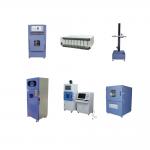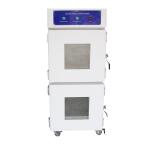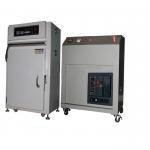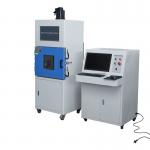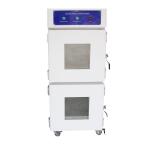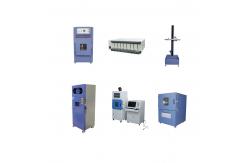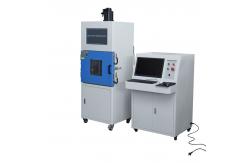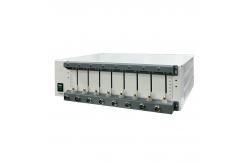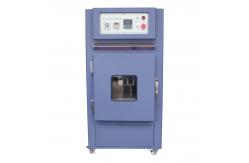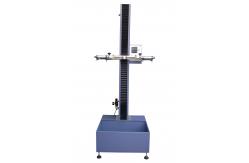In the modern era, batteries have become an essential power source
for a wide range of applications, from portable electronics to
electric vehicles. However, the safety and performance of batteries
are of utmost concern. The Battery charging and discharging/short
circuit/nail penetration/lithium burning/Drop/explosion-proof
tester is a comprehensive and crucial piece of equipment designed
to evaluate and enhance battery quality. This multi-functional tester is specifically engineered to conduct
a series of rigorous tests on batteries. It serves battery
manufacturers, research institutions, and quality control
laboratories. The primary objective is to assess the battery's
charging and discharging characteristics, its response to extreme
conditions such as short circuits, nail penetration, and lithium
burning, as well as its durability under drop impacts.
Additionally, it is equipped to test the battery's explosion-proof
capabilities, ensuring that batteries meet the highest safety
standards and perform optimally in various applications. - Integrated and Robust Design
- The tester is constructed with a heavy-duty framework, usually made
of high-strength steel, to withstand the potential stresses and
hazards associated with battery testing. The exterior is designed
to be durable and resistant to chemical and thermal damage. The
interior is compartmentalized and lined with fireproof and
heat-resistant materials to contain any potential battery failures.
The control panel is strategically placed and protected, featuring
a user-friendly interface with clear indicators and buttons for
easy operation. The equipment also includes safety interlocks and
shields to prevent accidental exposure to dangerous test
conditions.
- Precision Charging and Discharging Systems
- Charging Control: The charging system is highly accurate and
programmable, capable of handling a wide range of battery voltages
and chemistries. It can apply precise charging currents and
voltages, following specific charging profiles such as constant
current-constant voltage (CC-CV) or multi-step charging algorithms.
The system monitors the battery's voltage, current, and temperature
during charging to ensure safe and efficient charging. It can also
detect and handle overcharging conditions, automatically adjusting
the charging parameters or terminating the charge process.
- Discharging Control: The discharging system is equally precise,
allowing for controlled discharging of batteries at different
rates. It can measure the battery's capacity accurately as it
discharges, providing valuable data on the battery's performance.
The system can also simulate real-world discharging scenarios, such
as pulsed discharges or continuous discharges at varying loads. It
is equipped with safety features to prevent over-discharging, which
could damage the battery.
- Extreme Condition Testing Capabilities
- Short Circuit Test: The tester can perform short circuit tests on
batteries, creating a direct connection between the battery
terminals. It measures the resulting current and temperature rise,
evaluating the battery's ability to handle short circuit situations
without overheating or exploding. The system is designed to quickly
interrupt the short circuit if dangerous conditions are detected.
- Nail Penetration Test: This feature allows for the simulation of a
nail penetrating the battery. The tester records the battery's
response, including any potential thermal runaway or gas evolution.
It helps assess the battery's internal structure and safety
mechanisms in the event of a severe internal short circuit.
- Lithium Burning Test: The equipment can initiate a controlled
lithium burning test, observing how the battery reacts and whether
it can contain the reaction without spreading. This test is crucial
for evaluating the battery's safety in case of a lithium-based
chemical reaction going awry.
- Drop Test: The tester is equipped with a mechanism to perform drop
tests on batteries from specific heights and angles. It measures
the battery's performance and integrity after the drop, checking
for any damage to the casing, terminals, or internal components.
The data obtained helps determine the battery's durability and
reliability during transportation or accidental drops.
- Advanced Instrumentation and Data Acquisition
- The tester is outfitted with a comprehensive suite of sensors.
Voltage and current sensors are used to monitor the battery's
electrical parameters during charging, discharging, and other
tests. Temperature sensors are strategically placed to measure the
battery's surface and internal temperature. These sensors are
connected to a state-of-the-art data acquisition system that
records and stores all the test data. The data can be accessed and
analyzed in real-time or retrieved later for in-depth studies. The
data acquisition system is highly flexible and can be integrated
with battery-specific software and databases, facilitating seamless
data transfer and analysis. It can also be configured to send
notifications and reports automatically, saving time and effort for
the users. Additionally, the control panel includes built-in alarms
and safety features that alert users in case of any abnormal
battery behavior, temperature spikes, or equipment malfunctions.
- Voltage and Current Range: The tester can handle a wide range of battery voltages, typically
from a few volts for small consumer batteries to several hundred
volts for high-power battery packs. The current range can also
vary, accommodating low-current charging and discharging for small
batteries and high-current capabilities for larger battery systems.
For example, it may support charging currents from a few
milliamperes to several tens of amperes and discharging currents up
to hundreds of amperes, depending on the model and configuration.
- Temperature Measurement Range: The temperature sensors can measure a broad temperature range,
usually from -40°C to +150°C, to accurately monitor the battery'
|

